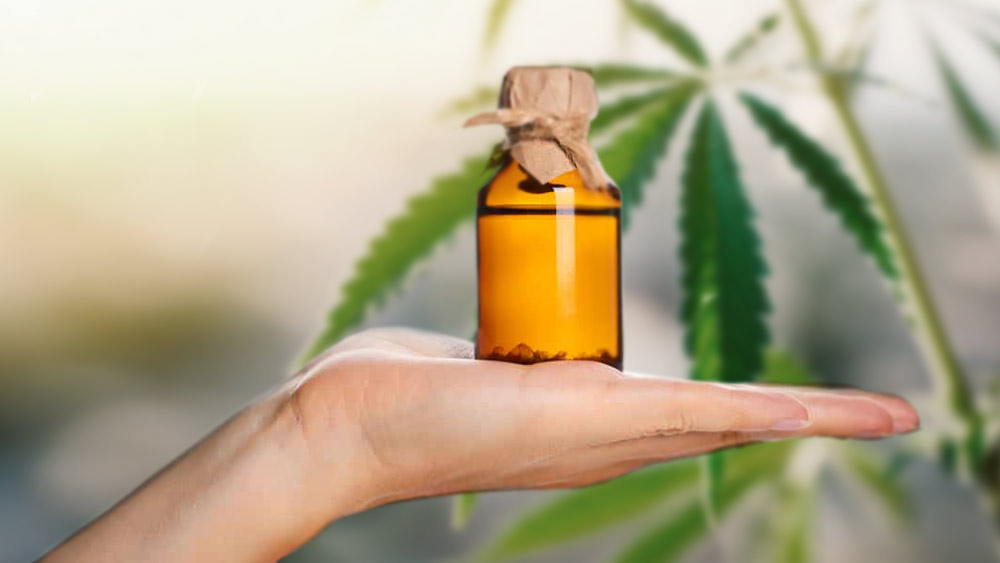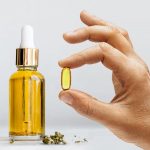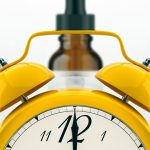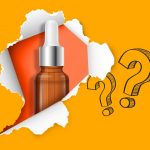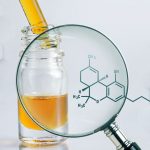CBD can be found in many products that are made to help consumers maintain or improve their health and look. From alternative medicine to skincare and beauty products, more and more of these products have their cannabidiol-infused alternative.
Although tinctures have been used in medicine for centuries and they’re nothing new, not many people know about CBD tinctures, how they are made, how they work, and what they are used for.
Today we’ll shed light on the subject of CBD tinctures, explaining some of their main properties and everything else you need to know if you’re considering using them.
What are CBD Tinctures?
CBD tinctures are liquid products that consist of cannabidiol in varying concentrations, depending on the producer. Although they are named tinctures, which are known as drugs dissolved in alcohol, alcohol usually isn’t part of their ingredient list. Instead of alcohol, CBD extract is solved in different types of vegetable oils.
Basic components of almost any CBD tincture are cannabidiol extract and some type of oil (e.g. olive oil, hemp seed oil, coconut oil). Carrier oils are vegetable oils that are derived from plant seeds or nuts. Their role in CBD tinctures is to allow easier consumption and to transfer cannabidiol through the body.
Also, many carrier oils have properties that are beneficial for our overall health. For example, hemp seed oil, which is often used in CBD tinctures, has the optimal ratio of omega-3 and omega-6 fatty acids (1). These fatty acids have a big role in daily nutrition and are important players in keeping the cardiovascular system healthy.
In order to acquire cannabidiol for making tinctures, the producers use a process called CBD extraction. The process consists of any of several different methods for deriving CBD from either hemp or marijuana plant. These methods differ from each other based on substances that are used for extracting cannabidiol from the plant.
The most popular are ethanol extraction and CO2 extraction. The first one uses the alcohol ethanol for extraction and the second uses carbon dioxide to isolate CBD from the plant. Although both methods are safe, the extraction that involves CO2 is more popular because it is believed to be cleaner than the method based on alcohol (ethanol) use.
How to Use CBD Tinctures?
Tinctures are packed in bottles with a dropper that allows easy application. Before use, it is recommended to shake the bottle to ensure that the content inside is mixed well.
This CBD-infused product should be used sublingually, which means that you should place a desired amount of drops under the tongue and wait for a couple of minutes. While you wait, skin cells will absorb the CBD from the tincture and transfer it to your blood.
The biggest advantage of this way of consuming CBD is the speed with which CBD gets into the blood, e.i. the speed with which cannabidiol affects the body. With some other types of CBD products, such as capsules, this period is longer because capsules need to be ingested through the digestive tract in order to get transferred to the blood and start to “work”.
Sublingual consumption may provide the fast-acting benefits of CBD, but it is not the only way to use tinctures. You can also get your daily cannabidiol dose from tinctures simply by adding a few drops of CBD tincture to tea or smoothie. That way you can boost the nutritional benefits of your favorite beverage or meal.
Since CBD tinctures are easy to use, they are often chosen by people who are new to consuming CBD.
One thing that new users are commonly unsure about is how to properly dose tinctures. We will try to solve this riddle for you below.
How to Dose CBD Tinctures?
How much CBD tincture you should take depends on the condition you want to treat, on the characteristics of your organism, the properties of the CBD extract used, and its concentration in one bottle of a tincture. Everyone is different, so the ability to absorb different substances varies from person to person.
One thing is certain – the recommended daily dose and serving size are usually stated on the CBD tincture packaging.
It is usually recommended to start with a couple of drops, and then to increase or moderate the dose, if needed. Also, it is advisable not to exceed the recommended daily dose, which is 1 ml of CBD tincture per day.
Remember, the amount of CBD tincture is not equal to the amount of CBD since tinctures have other ingredients besides cannabidiol.
Be sure to always look for information on the label about the exact amount of CBD in one recommended daily dose, so you could more easily keep track of the amount of cannabidiol that you are taking.
Full-Spectrum CBD vs. Broad-Spectrum CBD Tinctures
CBD tinctures can be made from different cannabidiol extracts: full-spectrum CBD extract, broad-spectrum CBD or CBD isolate.
Which extract will be used in tinctures depends on the manufacturer, and its type should be stated on the ingredient list on the bottle of the tincture.
To help you understand why different users buy tinctures made from different types of extracts, we will now break down the main differences between these three types of CBD extract:
Full-spectrum CBD extract contains every compound that the hemp plant contains since it undergoes minimal filtration during the extraction process. In other words, this CBD extract contains other cannabinoids besides cannabidiol (e.g.THC, CBN, etc.), as well as flavonoids.
How much of the other compounds will be present in the extract depends on two things: 1) characteristics of the extraction method, and 2) which part of the plant is used for producing the extract.
It is important to note that full-spectrum CBD should have less than 0.3% of THC. People often choose this type of extract because research shows that cannabinoids, when working together, enhance the positive medical effects on users. (2)
Things are a bit different with broad-spectrum CBD. Just like full-spectrum extract, it contains all the cannabinoids, terpenes, and flavonoids from the plant – with the exception of THC. So, if you want to use full-spectrum CBD extract, but you want to avoid the possibility of the THC-high, broad-spectrum CBD is the right solution for you.
Lastly, CBD isolate is an extract made only from cannabidiol. It doesn’t have any other compounds or residues from the plant such as terpenes or other cannabinoids. This type of pure CBD product is a result of many filtration levels during which all the compounds that can be found in the plant are removed from cannabidiol.
No matter what type of CBD extract you choose, cannabidiol is the dominant ingredient in all CBD tinctures.
The tinctures provide many benefits, so it’s no wonder there is such a big demand for them.
CBD Tincture Benefits
The main advantages of CBD-infused tinctures come from the fact that they have positive effects on the body and they are convenient to use.
First, tinctures are used to ease various symptoms, since CBD has many health benefits:
- CBD reduces chronic pain (3)
- CBD reduces insomnia and anxiety as symptoms of posttraumatic stress disorder (4)
- CBD reduces psychotic symptoms connected to schizophrenia and other mental disorders (5)
- CBD affects the seizures as symptoms of epilepsy, by reducing their number (6)
- CBD helps in combating the symptoms of multiple sclerosis (7)
Second, tinctures work faster than edibles and capsules. As noted earlier, CBD gets much faster into the blood when used sublingually.
Third, tinctures are very easy to use. You can use them at any time and place because the users don’t need any preparation in advance or any additional device.
Packed in a bottle that doesn’t take too much space, it can be easily carried around. This package design allows the consumer to take their daily dose on the go. Plus, tinctures often have a neutral flavor so they don’t affect the taste of a drink or food if used with the meal.
After all, no matter what type of CBD tincture you choose, you can’t go wrong by much, because it provides a huge range of benefits and usage options.
References:
- Veronika M, Věra K, Petr H, Leona B; Formulation, Characterization and Properties of Hemp Seed Oil and Its Emulsions; Molecules; 2017; 22(5):700.
- Ethan BR,Taming THC: potential cannabis synergy and phytocannabinoid-terpenoid entourage effects; British Journal of Pharmacology; 2011; 163(7): 1344–1364.
- Marija DS,Tijana S, Zorica AS, Sasho S, Zlatko K,Trajan B; Pharmacotherapeutic considerations for use of cannabinoids to relieve pain in patients with malignant diseases; Journal of Pain Research; 2018; 11: 837–842.
- Scott S, Janet OL; Effectiveness of Cannabidiol Oil for Pediatric Anxiety and Insomnia as Part of Posttraumatic Stress Disorder: A Case Report; The Permanente Journal; 2016; 20(4):16-005.
- Iseger TA, Bossong MG; A systematic review of the antipsychotic properties of cannabidiol in humans; Schizophrenia research; 2015;162(1-3):153-61.
- Kaur G, Andriola M, Manganas L; Efficacy of Cannabidiol in Children with Intractable Epilepsy; Neurology; April 2017; 88(16).
- Mecha M, Feliú A, Iñigo PM, Mestre L, Carrillo-Salinas FJ, Guaza C; Cannabidiol provides long-lasting protection against the deleterious effects of inflammation in a viral model of multiple sclerosis: a role for A2A receptors; Neurobiology of disease; 2013; 59:141-50.



